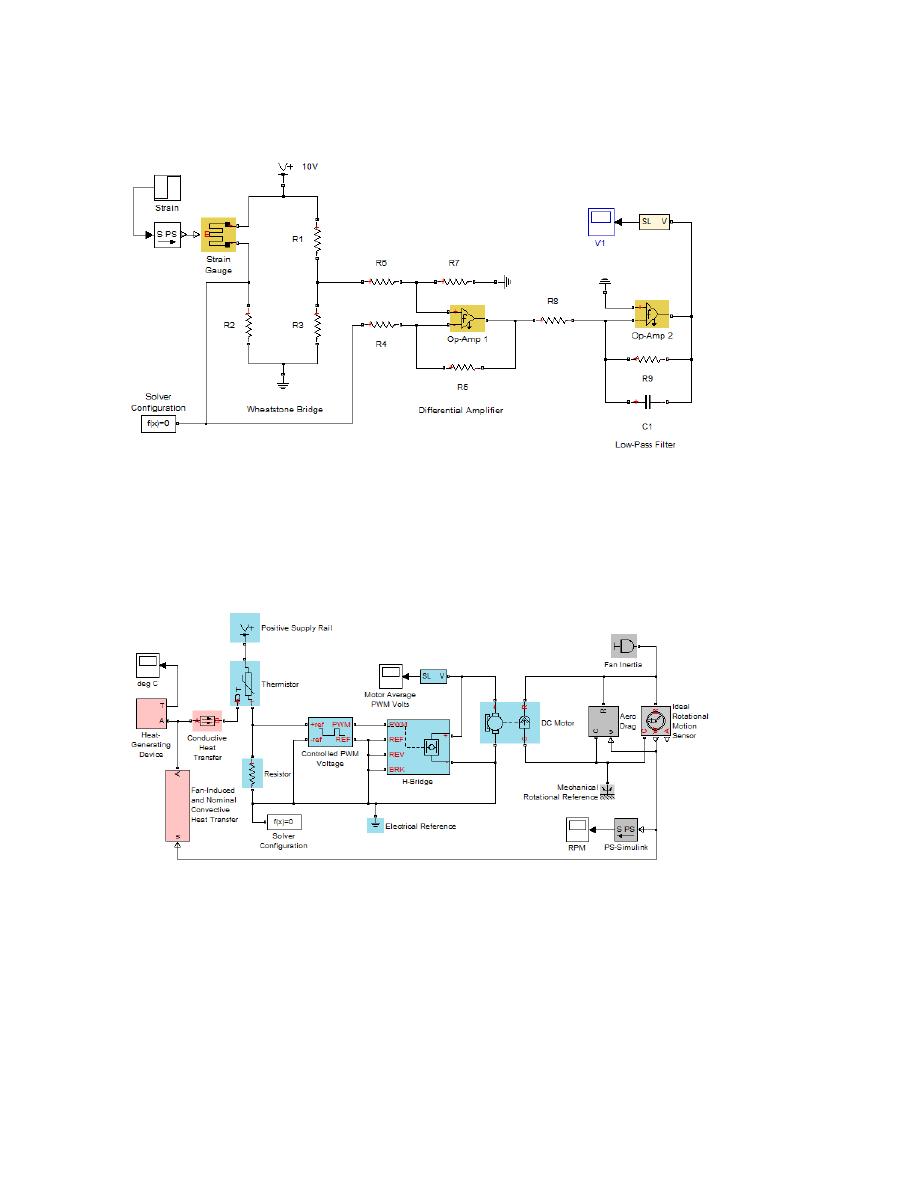
1
Wheatstone Bridges and Transducer
Theory:-
A Wheatstone bridge is an electrical circuit used to measure an unknown electrical
resistance by balancing two legs of a bridge circuit, one leg of which includes the
unknown components. The primary benefit of a Wheatstone bridge is its ability to
provide extremely accurate measurements (in contrast with something like a
simple voltage divider). Its operation is similar to the original potentiometer
A transducer is a device that converts one form of energy to another. Usually a
transducer converts a signal in one form of energy to a signal in another.
Aim of Experiment:-
To understand how to use Wheatstone bridge for measurement of unknown resister
and to understand the function of string gauge and thermistor
Procedure:
1- Connect the circuits shown below in Fig(1) change the resistance R3 until
the current measurement is zero (Ig=0) this case means balance is occurred
or the value of Rx can be found.
Hint in the circuit take D.C Voltage =100V ,R1=10 ohm ,R2=10ohm.
2-The Whetstone Bridge can be used for strain gage measurement and thermistor.
The model shown in Fig(2) constructed in order to utilize strain gauge and
measurement amplifier. The strain gauge forms one leg of a Wheatstone bridge,
which in turn drives a differential amplifier. A second op-amp is then used to both
amplify and apply a low-pass filter to the measured signal. The op-amps are

2
implemented at a system level, with the user specifying parameters such as open-loop
bandwidth ,gain and maximum slew rate. In this circuit, the dynamics are primarily
set by the low-pass filter. The op-amp bandwidth and maximum slew rate have little
impact on the step response.
3- Second model is utilizing the combinations of thermal, mechanical and electrical
components to build a model for a thermistor-controlled fan. At beginning the heat-
generating device starts producing 2 watts at time zero, and then at 40 seconds this
increases to 20 watts. The thermistor therefore heats up, and its resistance decreases
thereby increasing the voltage across the PWM reference pins. This increases the
PWM frequency which in turn increases average motor current, and the fan speeds
up. The additional fan speed increases the convective cooling of the device,
moderating the temperature increase of the device.
Report :-
1-Compare between Wheatstone bright and wien bright?
2-In the strain gauge cct. What is the function of the two OP-AMP?
3-In the thermistor cct. What is the function of fan
4-Discusse the function of each circuits .
